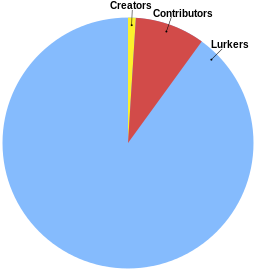 MOOCS are criticized for high dropout rates. Are dropout rates a barrier to learning? Should we be worried about low completion rates? We think it's incorrect to use dropout rates to gauge the success of MOOCs. We should NOT be worried about completion rates. Here’s why:
MOOCS are criticized for high dropout rates. Are dropout rates a barrier to learning? Should we be worried about low completion rates? We think it's incorrect to use dropout rates to gauge the success of MOOCs. We should NOT be worried about completion rates. Here’s why:
The Medium is the Message
If we take a deep, realistic look at the medium, we won’t consider dropout rates for assessing the success of MOOCs. As Marshal McLuhan tells us—"Technology shapes our behaviour." We step into the online medium (which is like an ocean with no beginning and no end) and we’re automatically drawn to what’s interesting. Our purpose is not to read the Internet or its resources like a book from beginning to end.
“People don't actually read newspapers. They step into them every morning like a hot bath.” - Marshal McLuhan
It doesn’t matter from where you enter the hot water bath or from where you exit it.
Internet Audience
We all know the 1% rule:

Isn’t that how it goes for almost everything on the Internet? We can again look at Marshal McLuhan’s thoughts on media and how it determines behaviour.
Many MOOCs ask questions to study dropout rates. Ideally, if people go out of any MOOC knowing even a wee bit more than they came in with, the MOOC has served its purpose (even if they go out with the realization that this topic isn’t for them).
Different Strokes for Different Folks
Many students don’t have access to great education across the world. If a student enters a MOOC with the purpose of learning those three principles of physics that s/he had problem understanding, a MOOC is helping the student. S/he need not “complete” the MOOC.
Physical world and the online world are two different spaces that evoke different behaviour and have different benefits. While completing a course book may be top priority for many students, no one bothers to read every single blogpost that even their most well-liked professor may have written. The metrics to measure success in the two media should be different.
The illusion that we ought to control learning leads us to misguided metrics like completion rates. When we let go control, this particular metric becomes meaningless.
What different success criteria can be used to study the success of online courseware? Read here.
How open is open education? Read here.
References: Image 1: By Michael Kellen (Own work) [CC BY-SA 2.5 (http://creativecommons.org/licenses/by-sa/2.5)], via Wikimedia Commons
Pie Chart: By Life of Riley (Own work) [CC BY-SA 3.0 (http://creativecommons.org/licenses/by-sa/3.0)], via Wikimedia Commons
